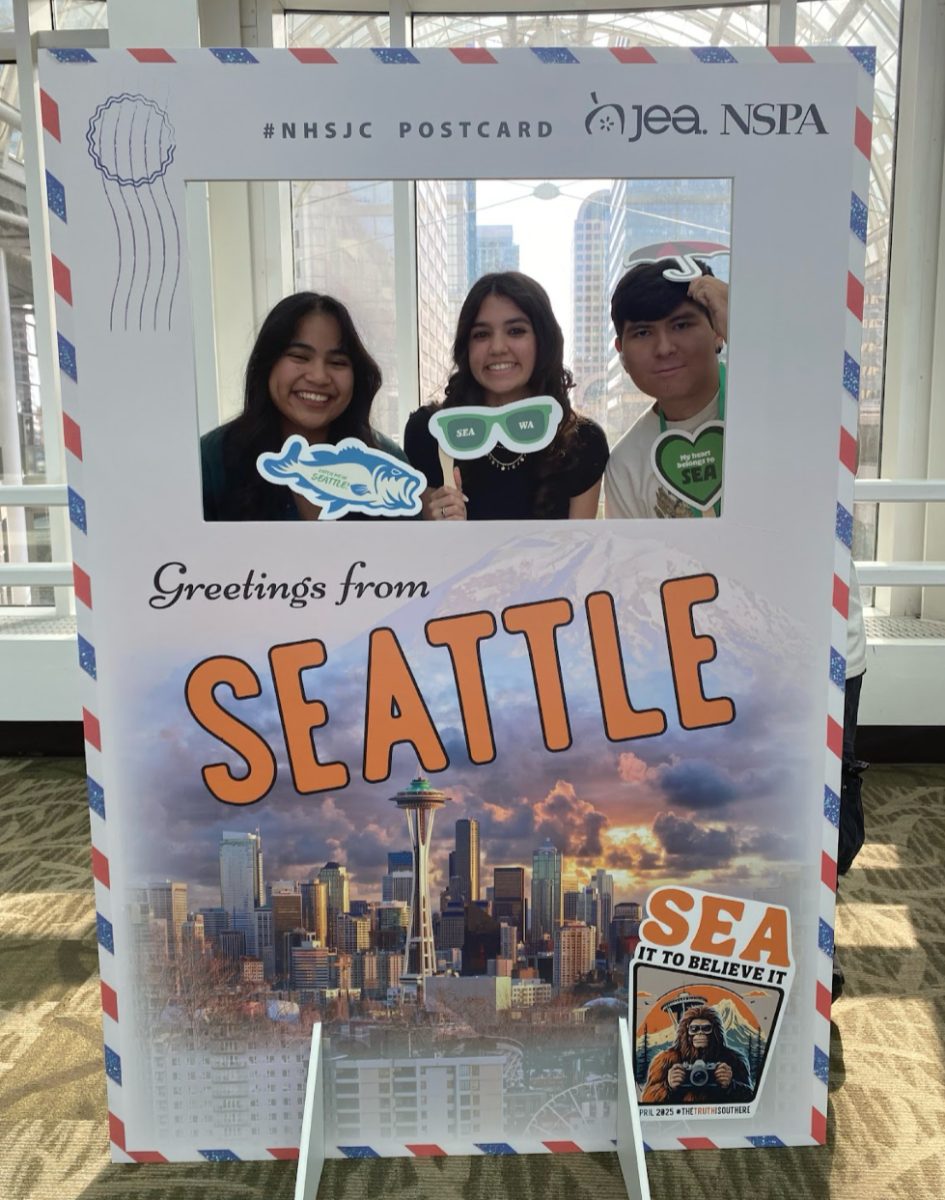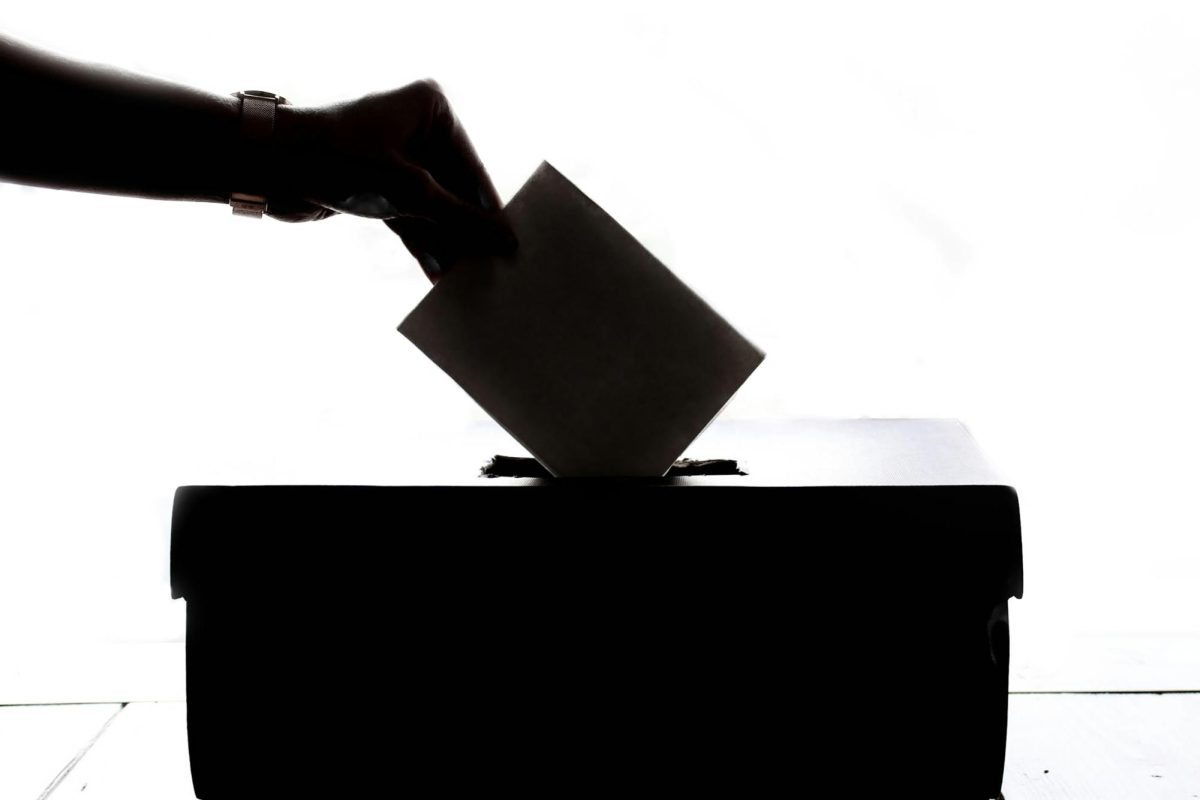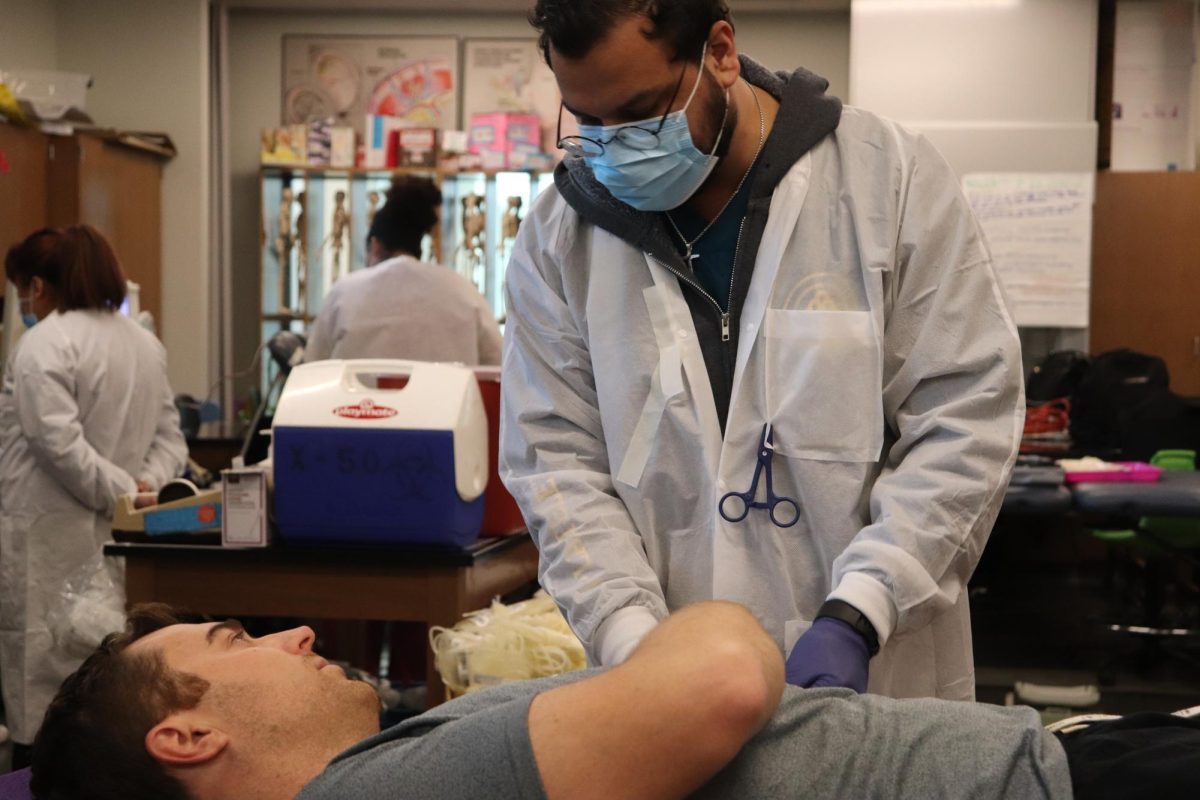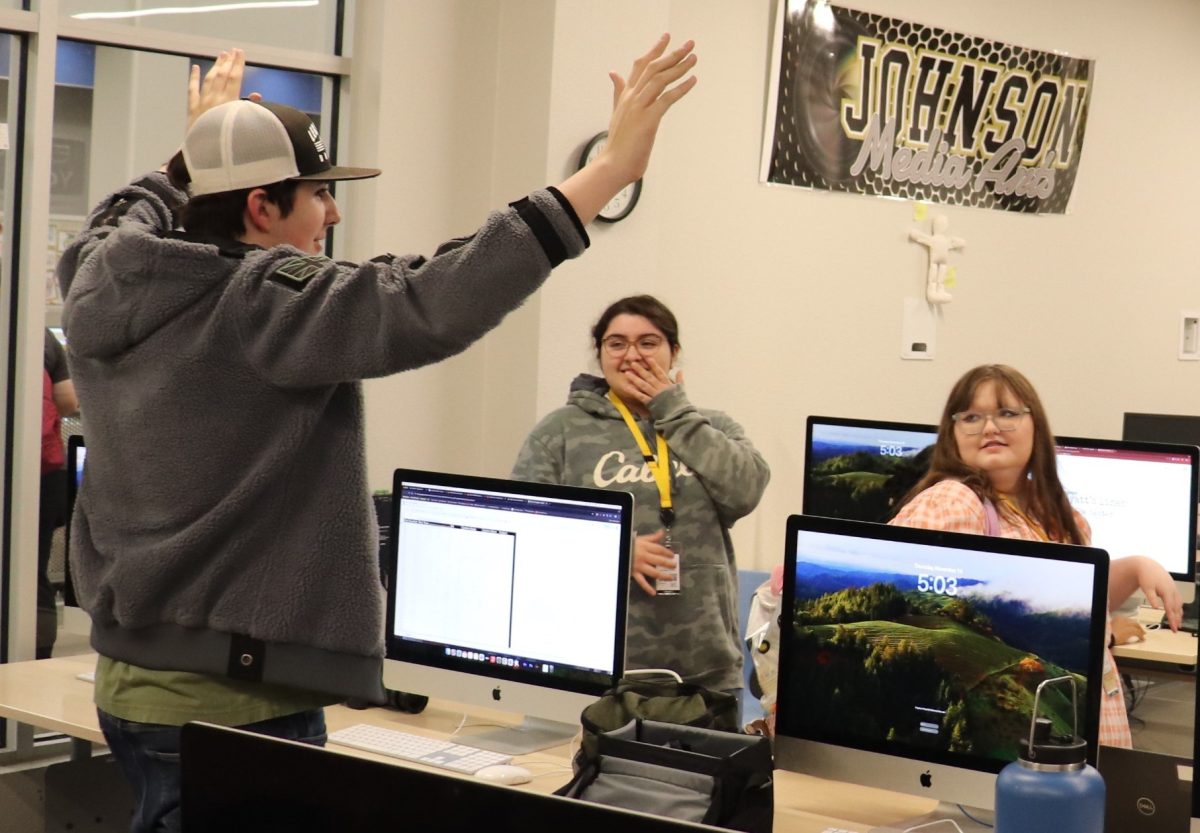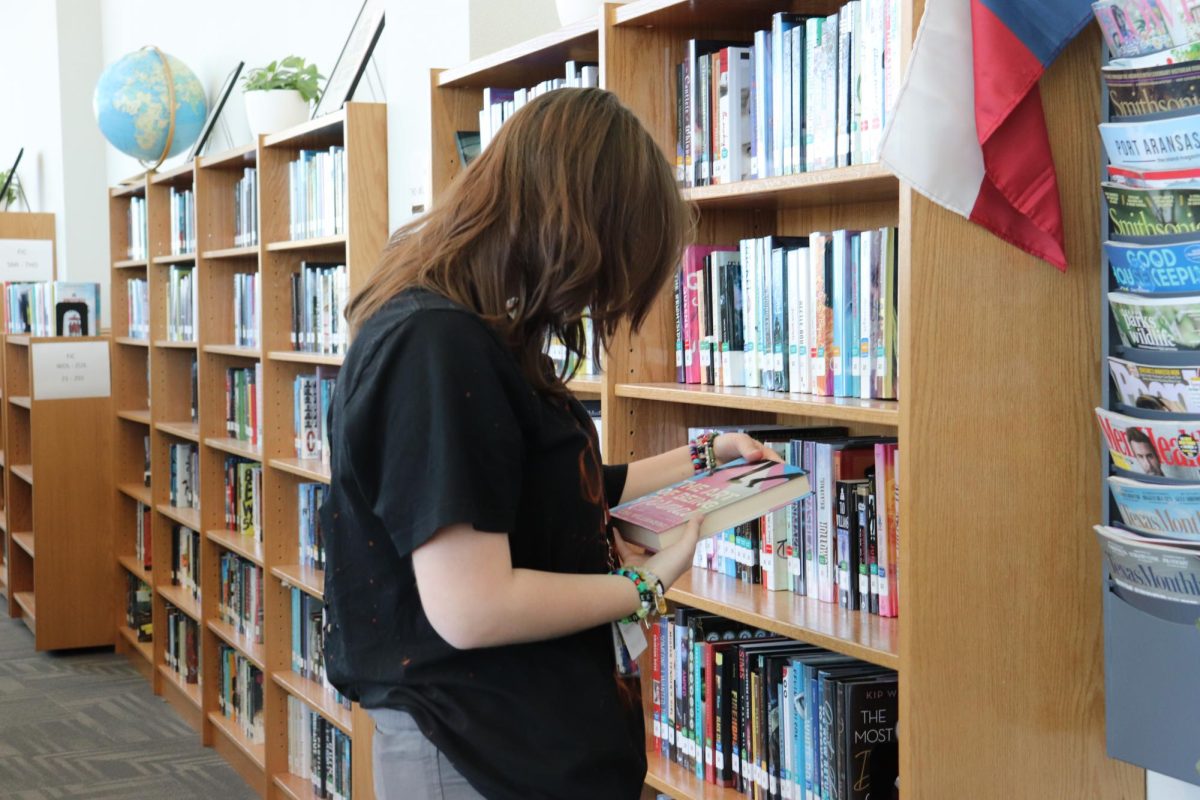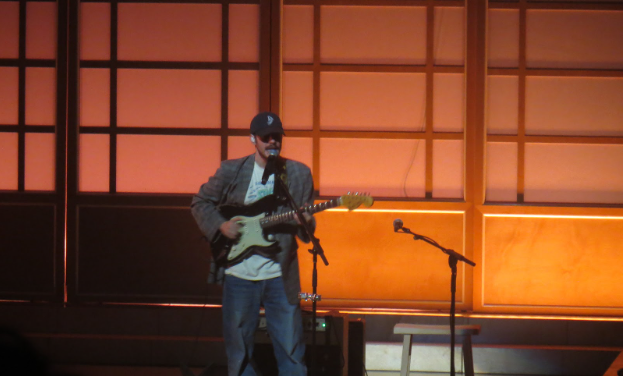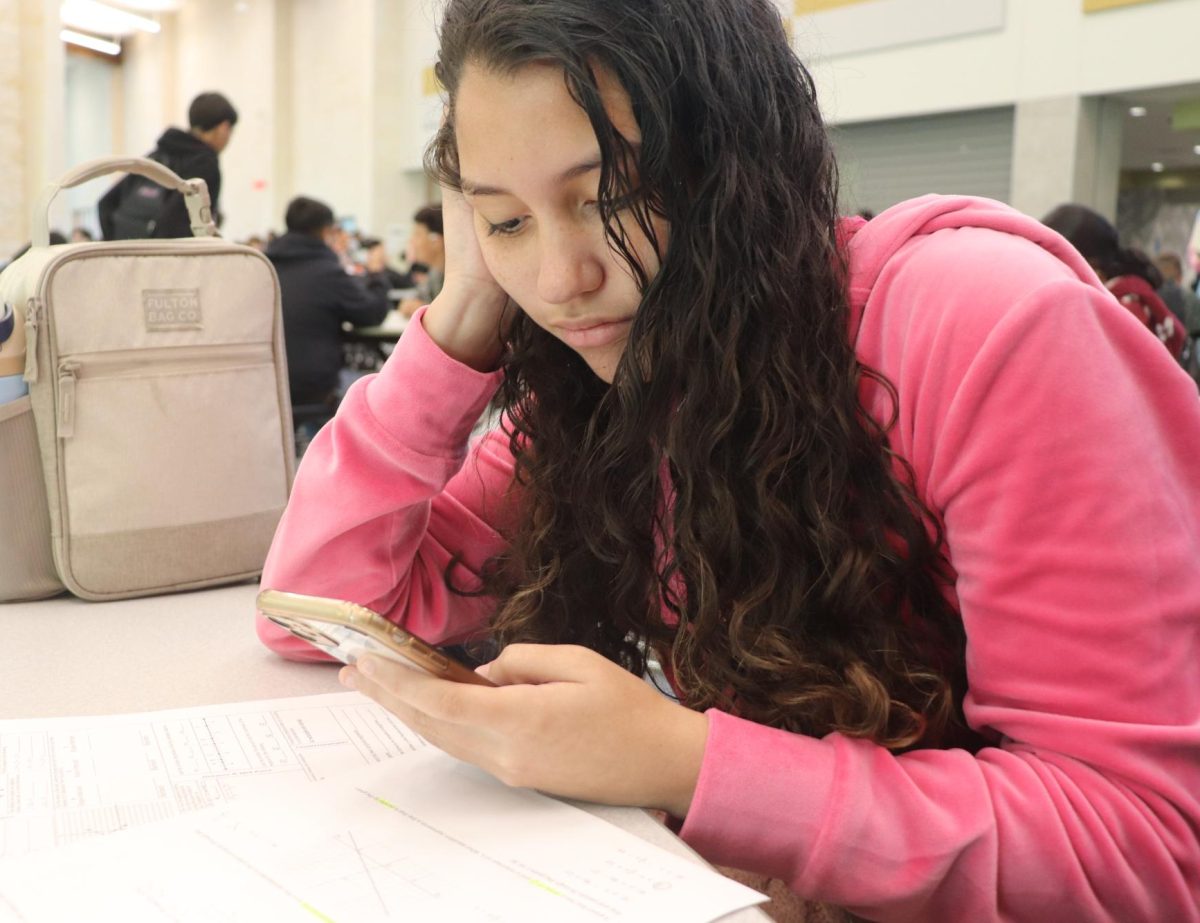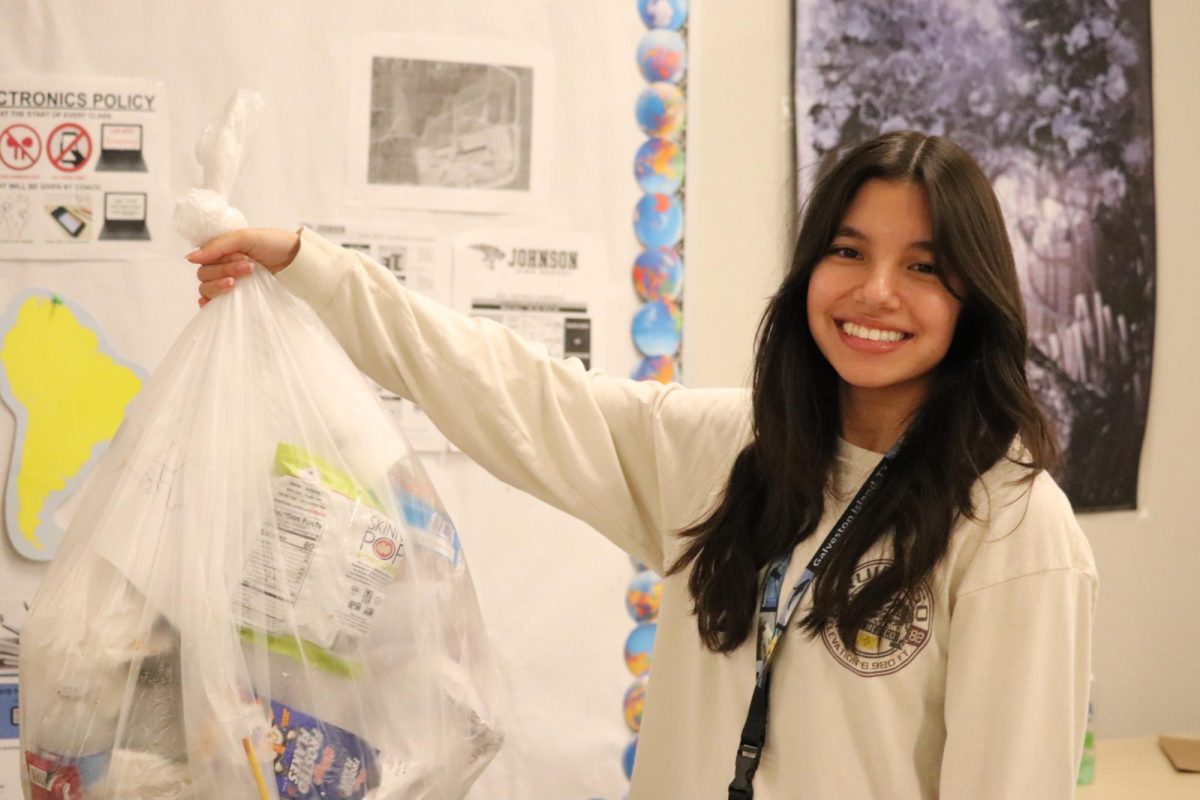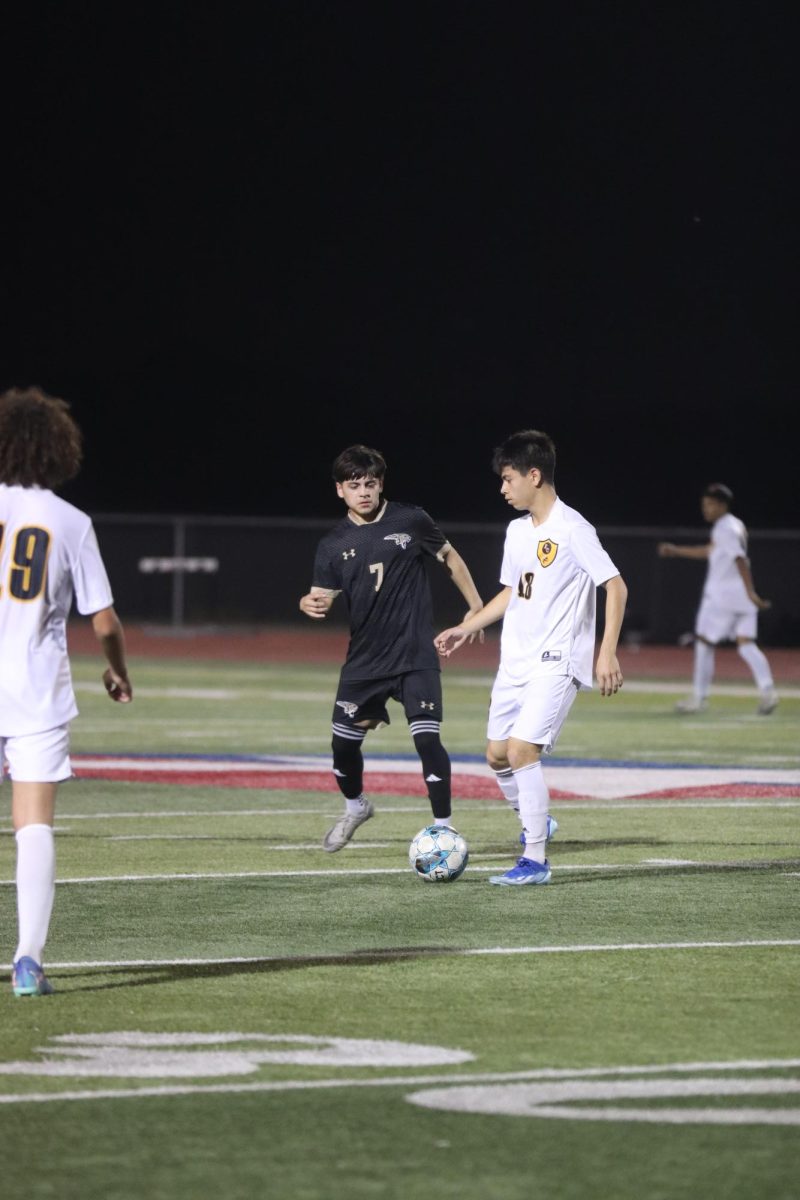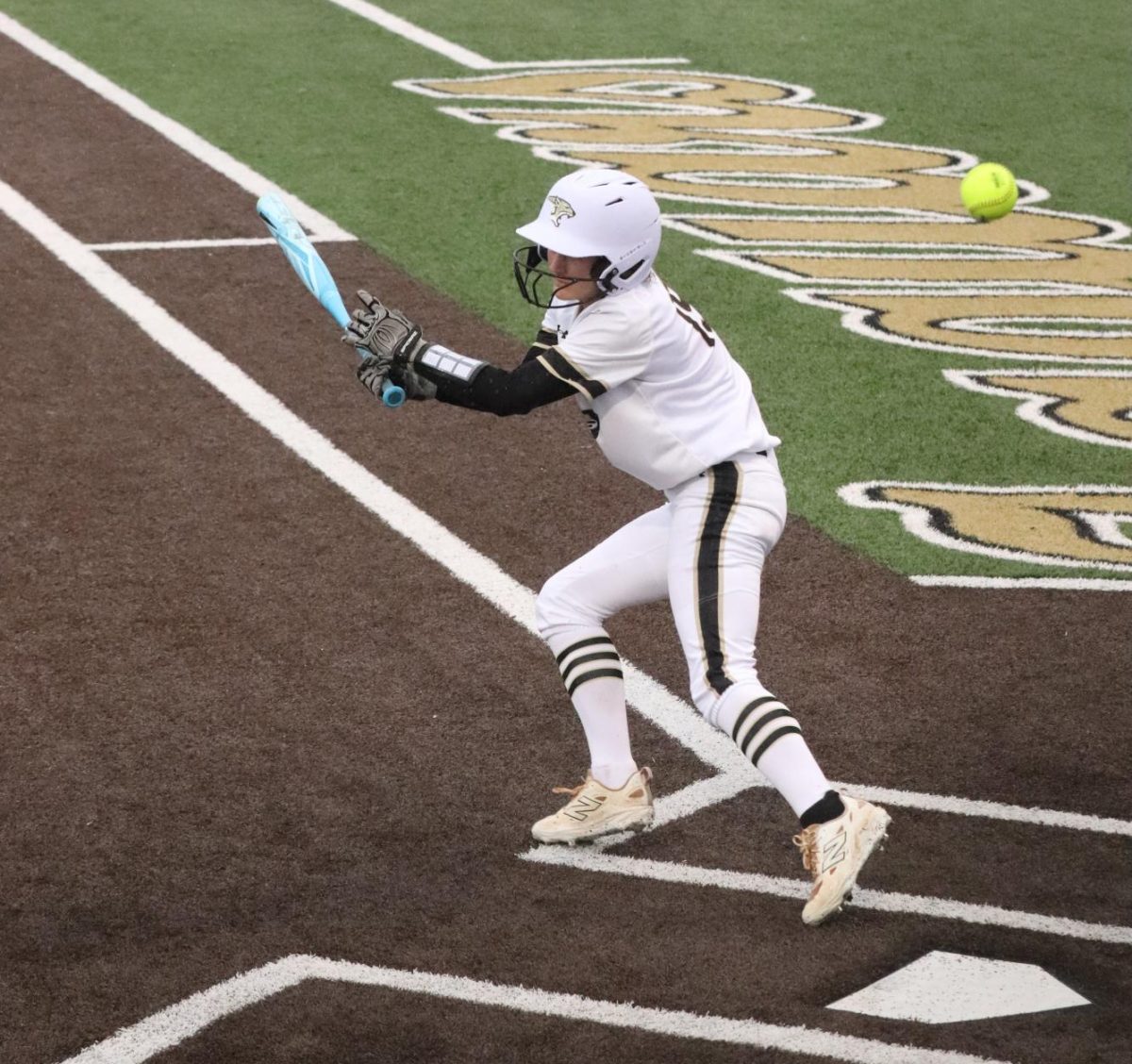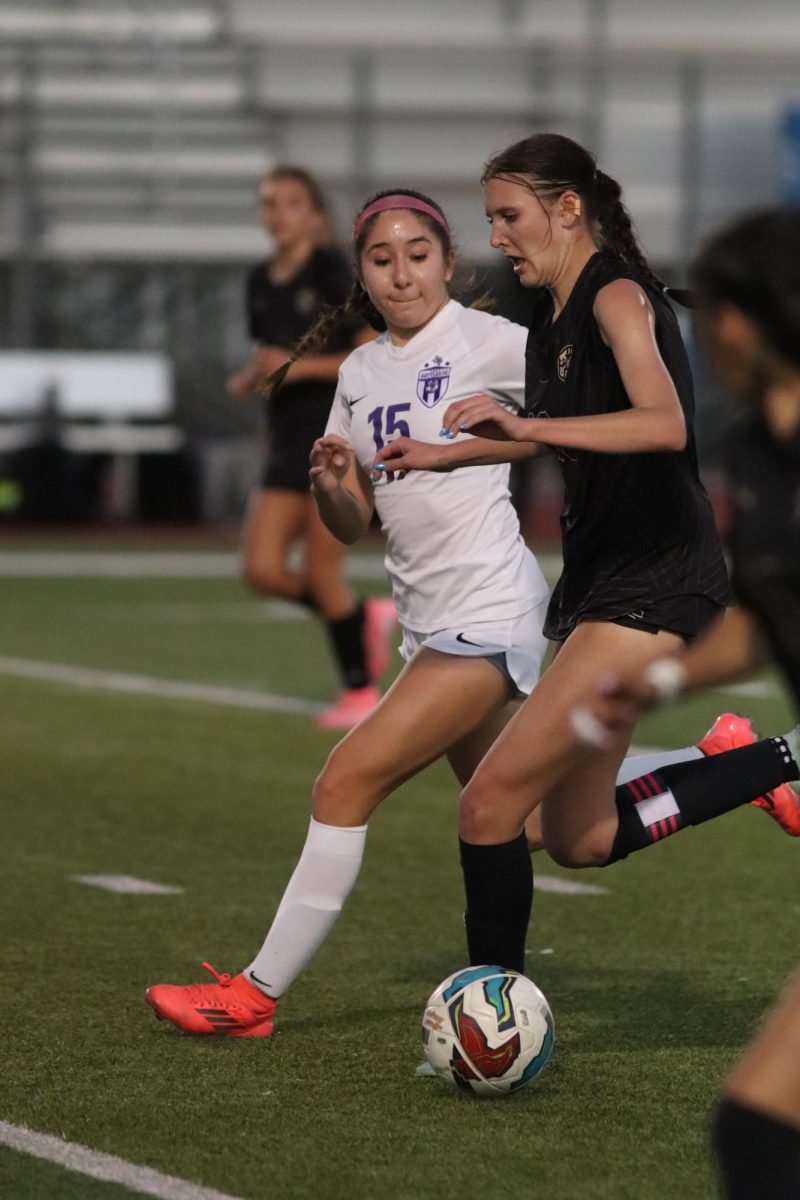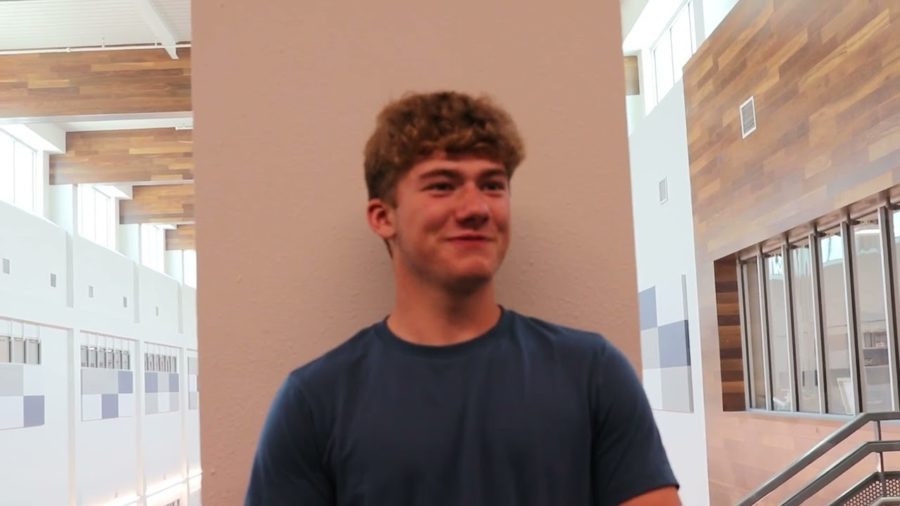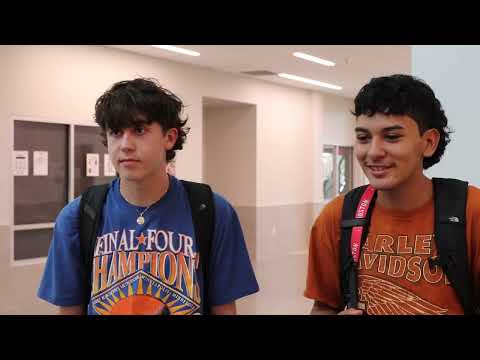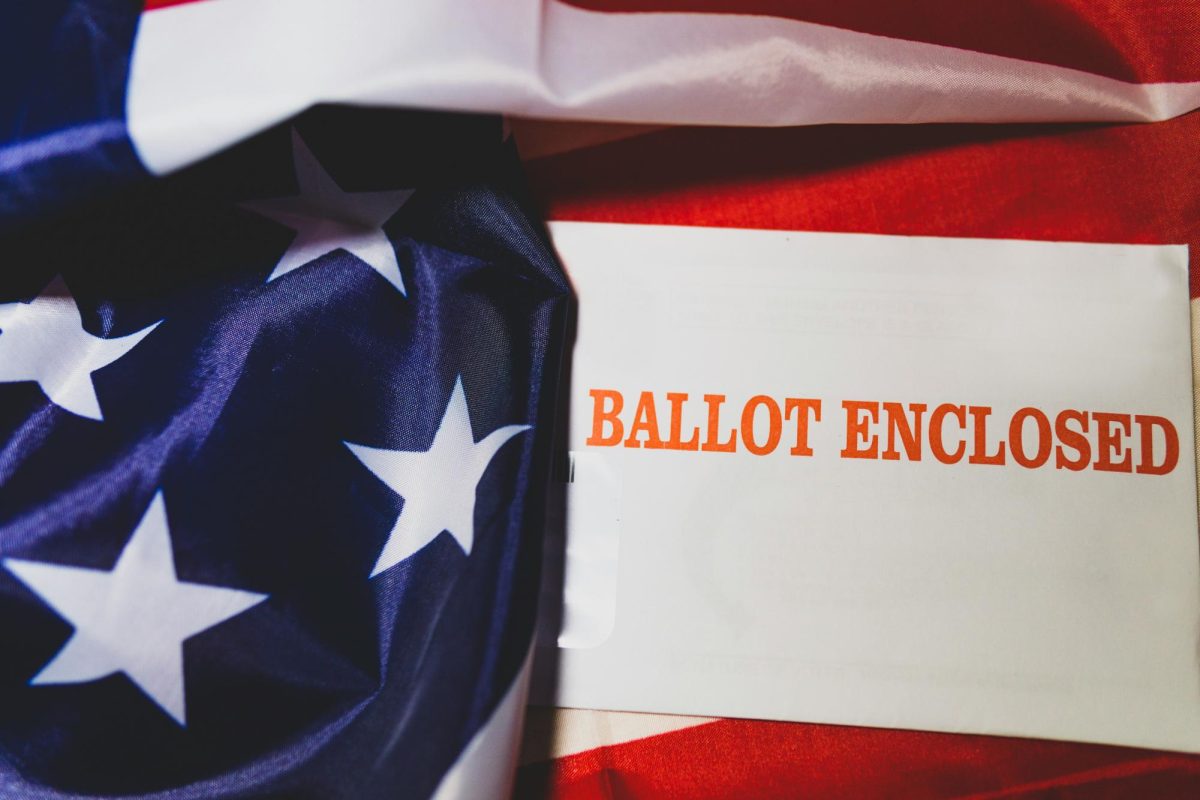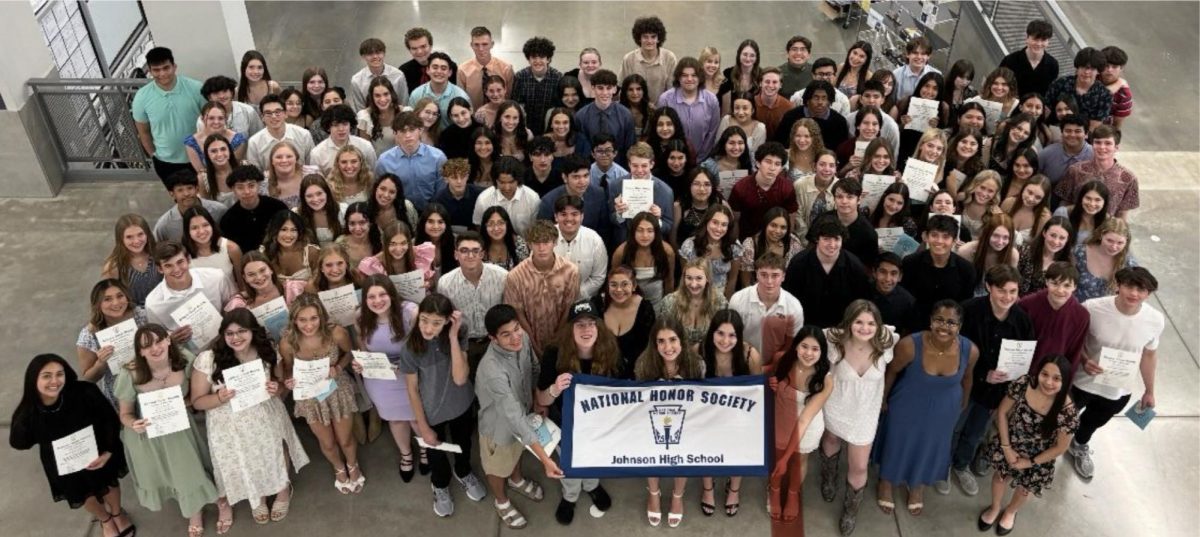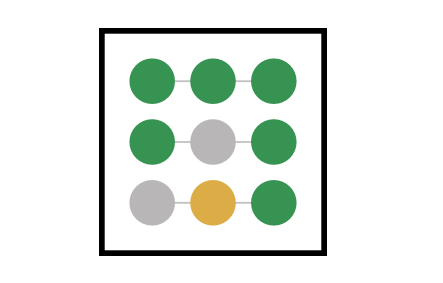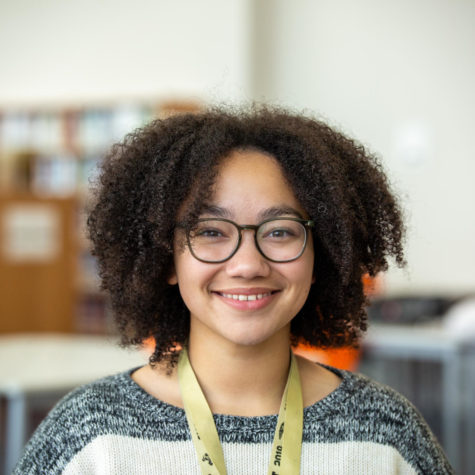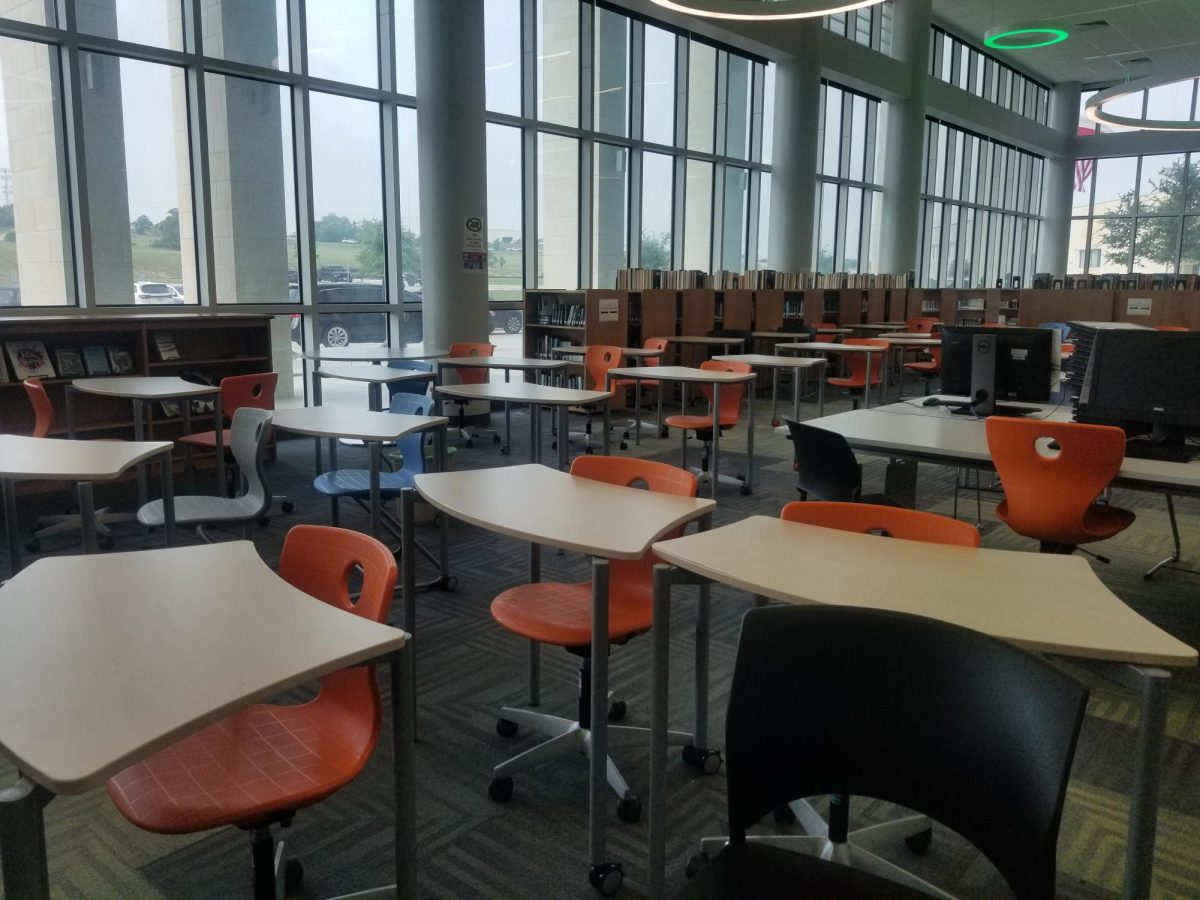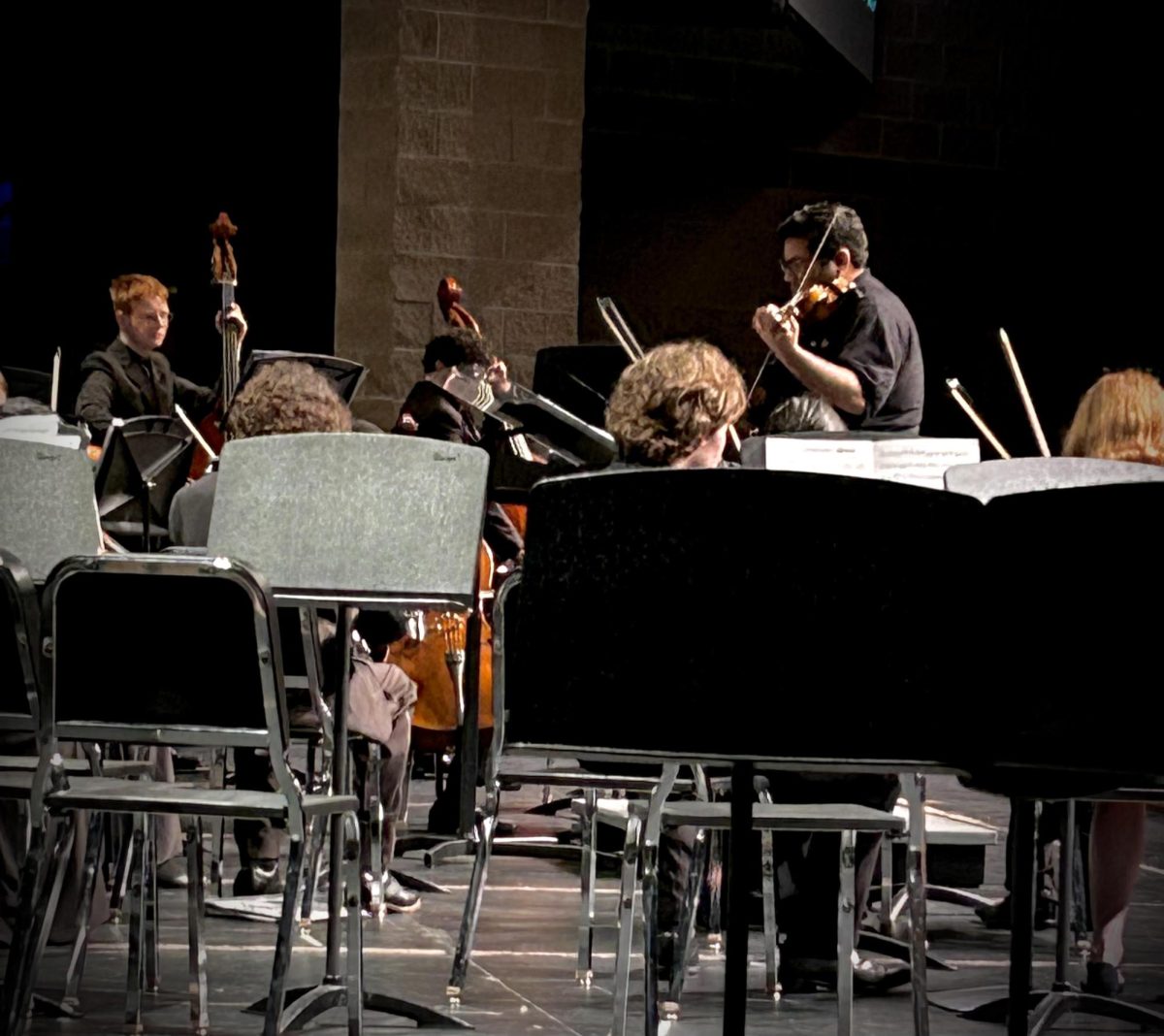Launching Into the Future
Engineering class presents rocket design and calculations at NASA
Engineering teacher Bryant Griesel prepares to launch a student’s rocket during class.
November 15, 2022
It starts with a problem statement: make a projectile that can break the sound barrier while staying under 13,000 feet, and graph its motion. Then, you have to get an idea of what you want the design to look like. Specify a nose cone, fins, a body tube and an engine. Once you get the materials, production starts — you’ve hit the ground and you’re running. After your finished product is cleared, all systems go. Ready for launch.
Members of the engineering class, taught by Bryant Griessel, are still in the design phase of this process. By the end of it, they will launch their rocket at a predetermined site in order to fulfill their STEM curriculum given to them by SystemsGo, an organization that promotes the study of engineering and the development of workforce skills in high school students. On Oct. 27, the students traveled to NASA to pitch their current calculations and designs to SystemsGo to be approved for the upcoming launch.
“We didn’t do well, but then again, nobody did,” senior David Von Paumgartten said. “I mean, it was rough. They’re very tough. Even if you got 99% of it correct, they’ll beat you down for that 1%.”
The critiques that the group received will allow them to go back and redesign their rocket proposal before starting construction.
“Once we get around December, we’ll start actually looking at parts, looking at designs, and doing more and more research into it,” senior Nolan Arellano said. “By January or February, we’ll start building.”
After the group finishes building the rocket, they will move on to the actual presentation and launch, which will happen next semester. Last year, they took it out to Stonewall, Texas, where their launch didn’t exactly go as planned.
“Last year, nine times out of 10, a rocket would make it up about 200 feet and then turn right back down towards the ground,” Von Paumgartten said. “Out of our two groups, both of them had O-ring failure in the engine.”
Despite these setbacks, the group still found a way to have fun and make memories during the trip.
“It was really fun last year to tweak it because you weren’t the only one doing it,” Arellano said. “They always found something wrong with it. There’s pictures of people just overturning their designs trying to shave down the nose cone, trying to shape fins instantly.”
Overall, last year’s launch made the engineering students more excited to see their rocket actually go up this year. October’s trip to NASA also boosted their enthusiasm to enhance their design.
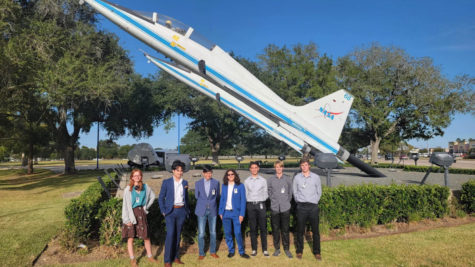
“Going to NASA seemed like a business venture because you’re going in there to get approval for a product you’ve got to present,” Von Paumgartten said. “We had to dress up in nice clothes, and they give you little badges. I was like ‘This is serious.’”
The presence of other high school groups presenting their own designs also contributed to the serious, high-pressure environment of NASA.
“It really wasn’t a competition, but it was a ‘competition,’” Arellano said. “It is like a nerd off, man. It’s the nerds who want to show off their stuff. They know their salts. They know what they’re talking about, and they have data from the teachers who have been doing this for years.”
Since this is only the fourth year that Johnson has been open, the engineering program doesn’t have a lot of the resources that these other schools, most of which have been running aerospace programs for at least 10 years, have.
“We’re on a fixed budget that we work with,” Von Paumgartten said. “We can’t get the best parts always, and some schools can. It shows, but we make it work. We’re fortunate to have what we have.”
Due to this competition and the expected professionalism, the engineering students were able to focus in and learn a lot about their field.
“The most interesting thing I learned was probably just the different equations that go into it and how many ways to approach this there are,” Arellano said. “It’s really interesting because I like that side of science.”
In addition to learning more about rocketry and aerospace engineering, the students were able to explore NASA, spend time with friends, and take home souvenirs to help them remember the experience.
“It’s great there,” Von Paumgartten said. “It’s really cool and interesting. I really loved the model of the International Space Station. They have an actual replica where they train astronauts, and we saw Ms. Williams, who’s done a few spacewalks.”
The biggest purpose of the trip, however, was to fulfill the goal of SystemsGo — to encourage students to pursue careers in science, technology, engineering or math.
“What I’ve decided is, in the future I want to study mechanical engineering,” Von Paumgartten said. “If I find that aerospace has a little bit more of what I want, I can always switch over to that, because it’s very similar. I do have fun with it, and I really enjoy it. So I think maybe someday, if I don’t do patents or something, I’ll probably go that way.”

